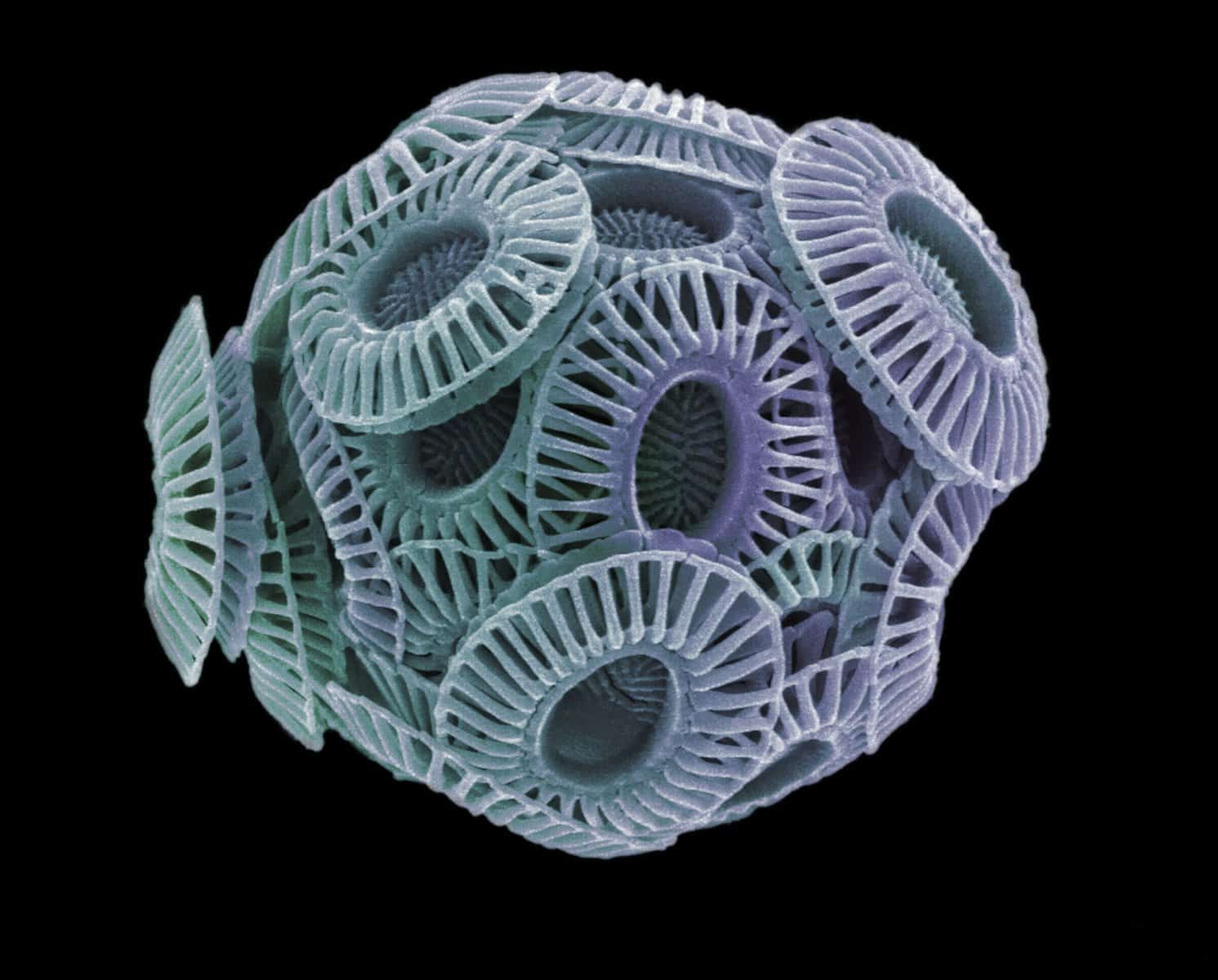

Photo: the phytoplankton species Emiliana huxleyi, coming soon to a cloud near you.
A species of marine phytoplankton that explodes after contracting a virus may play a role in regulating Earth’s climate, a new study finds.
Emiliania huxleyi is a type of single-celled plant-like organism called a coccolithophore that occurs ubiquitously in the world’s oceans. Under the right conditions, it multiplies rapidly to form giant aggregations, known as blooms, up to several thousand square kilometres in size.
When these blooms are infected by a virus called, imaginatively enough, the E. huxleyi virus (Eh V), the coccolithophores burst. Their calcium carbonate exoskeletons, or coccoliths, are then scattered into the water column. Pushed to the surface by bubbles, the exoskeleton fragments are aerosolised, or turned into airborne particles. Research published in the journal iScience by researchers at the Weizmann Institute of Science and Hebrew University of Jerusalem, in Israel, finds that in this state they may help promote cloud formation and potentially alter atmospheric processes.
The findings reinforce the idea that everything is linked in the Earth system, explains co-author Ilan Koren. “Our experiments suggest that ocean ecology can strongly affect fluxes of biological particles to the atmosphere,” he says. “This […]
Full article: A plankton virus affects cloud formation
Clean water is essential for life, yet millions of Americans unknowingly consume contaminants through their…
Human brains contain higher concentrations of microplastics than other organs, according to a new study, and the…
From the Office of the Governor: In anticipation of a multi-day, significant atmospheric river in Northern California,…
From Governor Newsom: Scientists, water managers, state leaders, and experts throughout the state are calling…
Photo: A harmful algal bloom in Milford Lake, Kansas, made the water appear bright green.…
An expanded plastic foam coffee cup is at a donut shop in Monterey Park, California.…